Virgil Van Dijk and Liverpool return to action against Everton on Sunday. While Jordan Henderson is talked up as a potential player of the year, the Dutch defender remains Liverpool's most important player because of his contributions in defence and attack.
Liverpool have had 59% possession in Premier League games so far this season. They have 57.8% at home and 60.2% away from home. It's Jurgen Klopp's mantra. When Joe Gomez and Virgil Van Dijk start together at centre back, Liverpool can play high upfield without fear.
That ability to suffocate opponents allows them to win possession and then retain it or attack while the opposition resets their shape.
Van Dijk is such a great defender because he's physically better than his opponents but not in a rush to win with his physical advantages. His mind is as sharp as any of the great defenders who have preceded him. His awareness is outstanding and his positioning puts him at an advantage at all times.
Outlining Van Dijk's skill set is a bit of a boring task. There are no real negatives. To find some, you'd have to nitpick the moments he was too relaxed reacting to the ball. There are what, maybe five moments like that all season long?
It's that unnatural consistency as the fulcrum of Liverpool's success that has made him the consensus best defender in the world. He's the most important player on the best team in the world.
Eclipsing accepted superstars such as Mohamed Salah and Sadio Mane requires more than being just a great defender. Van Dijk's contributions to Liverpool's overall style of play come both without and with the ball. He's the best ball-playing central defender that Liverpool have had since Daniel Agger. In fact, watching Van Dijk is like watching a hybrid between former Manchester United defenders Rio Ferdinand and Nemanja Vidic.
His Vidic-like qualities are apparent for all to see. Vidic was a simply dominant defender who often erased the best strikers in the league. His Ferdinand-like qualities tend to manifest themselves in a subtler fashion. Like Ferdinand, Van Dijk could step forward into a defensive midfield role with ease.
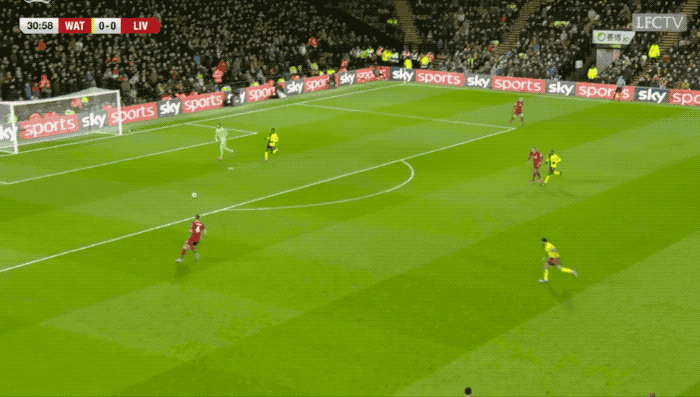
This first clip isn't Van Dijk. It's Dejan Lovren. It's not a coincidence that Liverpool's first loss of the Premier League season came when Lovren started. His defensive mistakes are a problem but they're only part of the problem. He is the inverse of Van Dijk in that he unsettles everyone around him by panicking without good reason.
Every central defender has to punt the ball away at different times. Anyone who has watched Ireland over the last decade knows that. But there's a stark difference between a defender clearing the ball and a defender unnecessarily giving away possession.
Van Dijk very rarely gives the ball away unnecessarily. He clears the ball when he has to but shows poise when he has to control the ball to find an outlet.
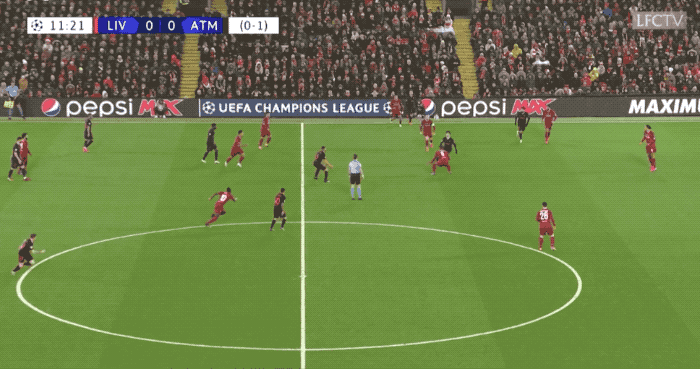
This sequence against Atletico Madrid begins with the ball in the air at midfield, in front of Van Dijk. It eventually breaks to the defender when Jordan Henderson knocks it back to him at speed. Joao Felix is in position to pressure Van Dijk and is advancing as the ball comes down. Van Dijk is aware of the attacker and he's aware of his surroundings.
Instead of taking a first touch to control the ball, he shifts his feet and kills it so it spins to his right. He's pushed the ball into space, leading Joe Gomez to space where he can comfortably move it on to Trent Alexander-Arnold.
By not taking a touch or rashly punting the ball upfield, Liverpool can retain possession and rebuild their attack.
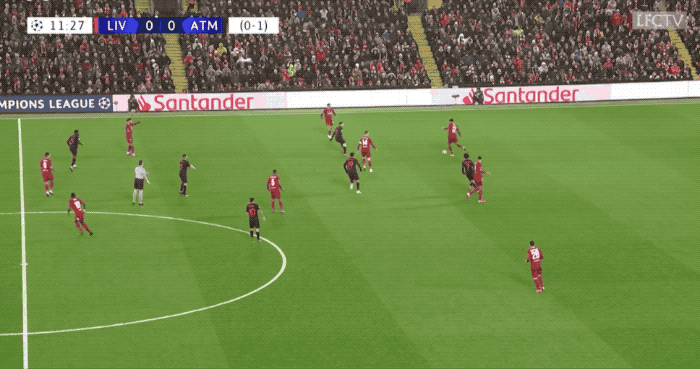
Van Dijk resets into the same position that Lovren did in the clip from the Watford game. Lovren's outlet was his left-back. He needed to shift the ball onto his left then play it across the field. But that's not something Lovren is capable of doing, so he panicked.
Andrew Robertson pulls wide to the sideline but there is a Madrid player covering him. Gini Wijnaldum is inside of Robertson, but he's also covered. Jordan Henderson is left uncovered, with Diego Costa splitting the space between he and Gomez. Van Dijk can't play the ball to Henderson because Joao Felix is in the passing lane.
After controlling the ball with his left foot, Van Dijk swivels and plays the ball back to Adrian to retain possession.
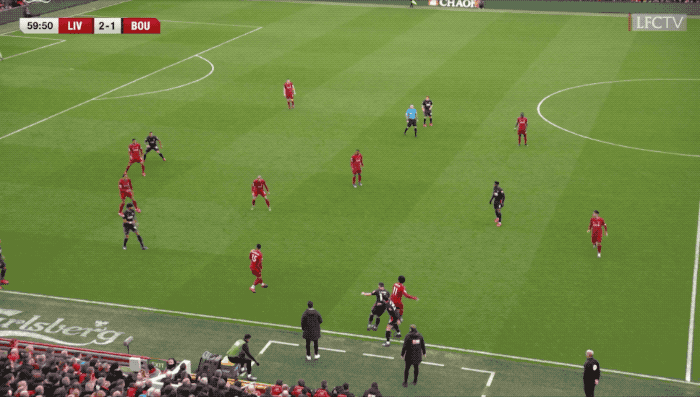
When he does take a touch with a defender in close proximity, Van Dijk shows off the same poise and quick feet to keep the ball moving accurately. Ironically, on this occasion against Bournemouth, it's midfielder Fabinho who overlooks the easy pass to rush into a misplaced ball downfield.
Although Liverpool tend to dominate possession and press high upfield, there are still opportunities to launch counter-attacks. The Dutch national is often the instigator of those plays.
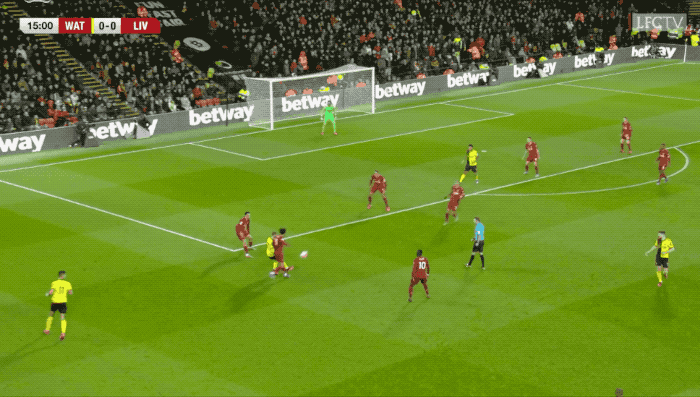
Speaking on Off The Ball this week, Keith Wood said that Peter Stringer never once threw a pass to his hands in his career. Wood was praising Stringer for always throwing passes that led him to space and naturally set him up to go to the right spot. What Wood is describing is an element of passing that transcends any single sport. In American football, it's an anticipation pass. In basketball, it's a lead pass.
The concept is consistent across all sports. You're putting the ball in a positive space and the receiver of the pass will be forced to follow into that space. Van Dijk consistently places the ball properly. He passes to the right foot for the right situation and generally puts the right weight/spin on the ball.
In the above clip against Watford, his first-touch pass purposely turns Sadio Mane to lead him into a pocket of space. Mane is moving forward at speed with his eyes up because of the pass. He can unleash Roberto Firmino down the sideline from there. Liverpool work the ball into the box with two more passes for an opportunity to attack the Watford goal.
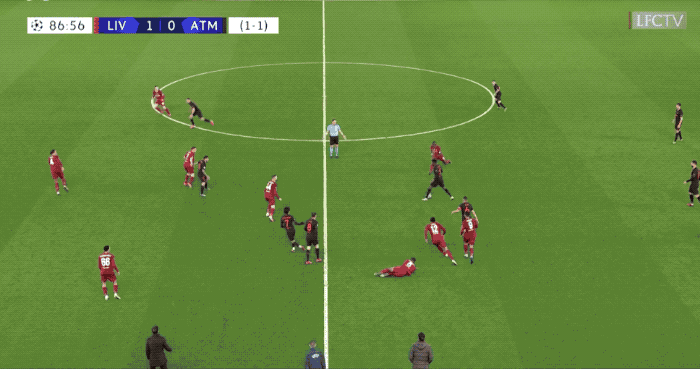
That awareness that allows him to cut off passes and beat attackers to the ball also helps him with one-touch outlets on intercepts. For this play, he drops the ball into space to immediately turn Robertson back upfield. This allows the counter-attack to begin with a running start. Liverpool carve an opening for Alexander-Arnold from there.
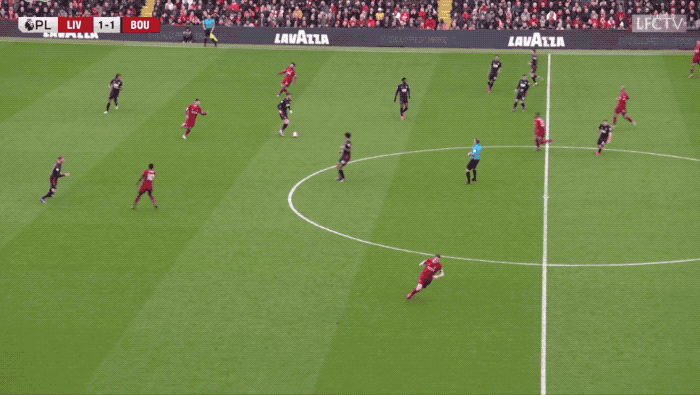
When the Liverpool midfield presses and the defensive line steps up, Van Dijk is in position to intercept and play through balls for his attacking teammates. This assist for Mane's goal against Bournemouth is his only Premier League assist this season. But through balls are a prominent aspect of his passing repertoire.
Since an overwhelming majority of teams sit deep and try to play tight against Liverpool's onslaught, Van Dijk mostly finds himself in position with time on the ball near the halfway line.
This requires patience and discipline. When a team is sitting deep and not trying to give you an opening, you have to be willing to recycle the ball with short passes. This forces the defence to constantly reset its shape. In those scenarios, the centre back also has to recognize when there are opportunities to switch the play and when there are opportunities to carry the ball forward.
Van Dijk does both consistently well.
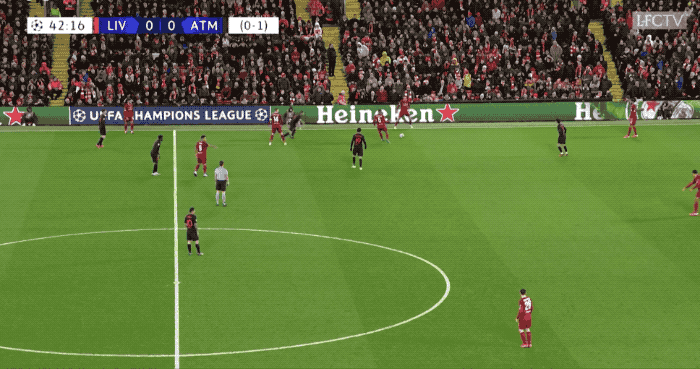
Gini Wijnaldum opened the scoring of Liverpool's last game. He scored a header against Atletico just before halftime. That goal came about when Alex Oxlade-Chamberlain found space in behind the defence down the right sideline. He put a good cross in and Wijnaldum finished well by heading the ball into the ground.
That sequence began with a throw-in for Liverpool just inside their own half. Atletico tried to box the ball in but Diego Costa was on his heels.
Costa's positioning allowed Alexander-Arnold to play the ball inside to Van Dijk. When he got the ball, he immediately recognized the opportunity to press the space in front of him. He raised the tempo and forced the midfield to sag off of him as they prioritized taking space away from Liverpool's attackers.
Van Dijk played a good ball to Robertson wide left before getting it back in an advanced position. He let the ball beat him so he wasn't playing into the path of the defender in front of him. That allowed him to switch the play to the right side. The goal came seconds later.
While Liverpool's midfielders are by no means limited and tend to be underrated in terms of technical ability, it's clear that none of them are on the level of a Xabi Alonso when it comes to passing. Alonso's ability to spray the ball from one side of the field to another pulled apart many defensive sets that were otherwise flawless. Van Dijk is Liverpool's best switcher of the play.
A tenet of Pep Guardiola's success over the past 12 years has been to have defenders who play like midfielders. It started with Carles Puyol and Gerard Pique in 2008. Klopp, Guardiola's current rival, has the same approach but with a slightly emphasis.
Because of how Liverpool set up, Van Dijk ends up playing far more long-range passes than Pique or Puyol did for that Barcelona team.
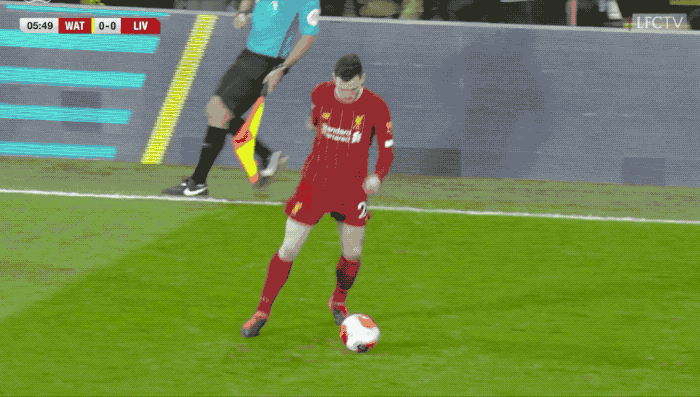
This pass sets Liverpool's attack up in the Norwich half of the field.
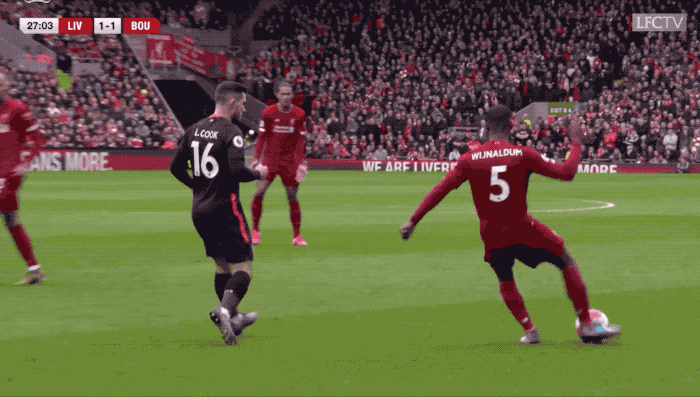
This pass penetrates the box and leads to a corner after the ball is put across the six-yard box.
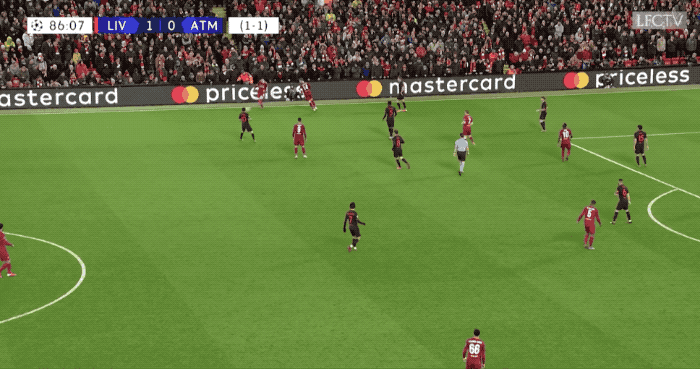
Creating space for Mohamed Salah is a priority for Liverpool. Defenders tend to grab him and get as tight as possible to him at every available opportunity. One way to force them away from Salah is to move the defence from side to side before switching the ball rapidly.
Salah does most of the work here, it's not like Van Dijk would be given an assist if he scored. Van Dijk had to hit the ball with high velocity and place it perfectly to make sure Salah had the time to run at the defenders.
Liverpool attack and defend as a team for the most part. Van Dijk is not the most important piece of their attack but he does play an important role. His technical ability with the ball is easy to ignore because we already have to pile on the superlatives when talking about his defending.
Off The Ball's Nathan Murphy recently argued that Van Dijk was Liverpool's best player in Premier League history. David Meyler, and seemingly the whole of Liverpool on twitter, disagreed with him. Steven Gerrard is a high bar to clear, especially for Liverpool fans, but if Van Dijk continues to play the way he has, that debate isn't going to have an easy answer.








